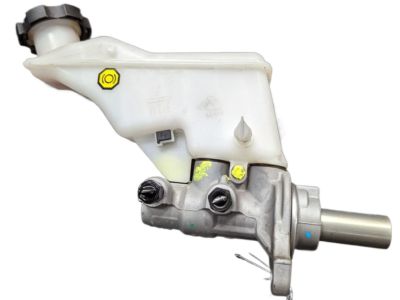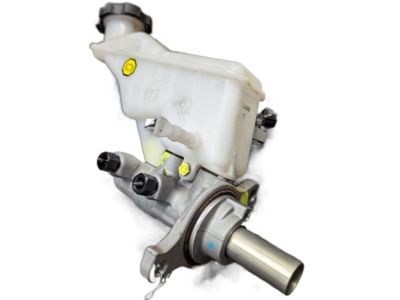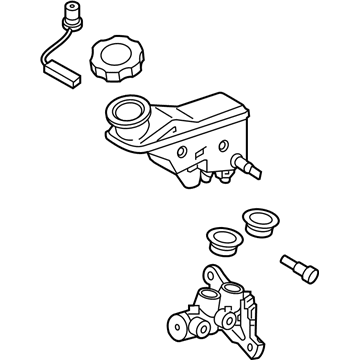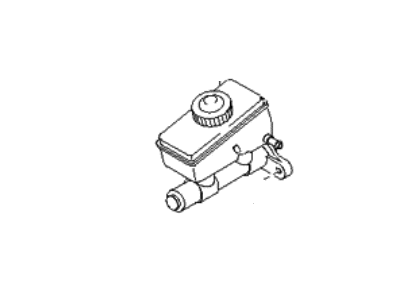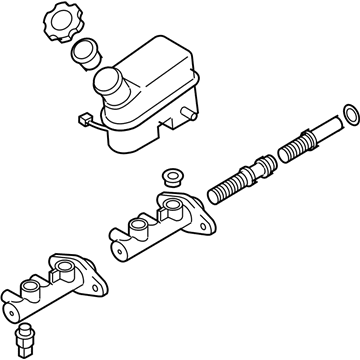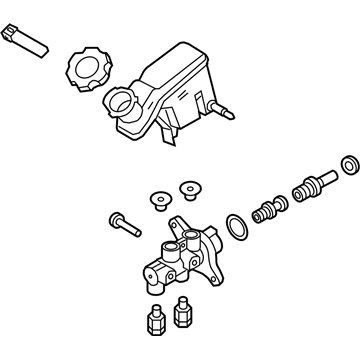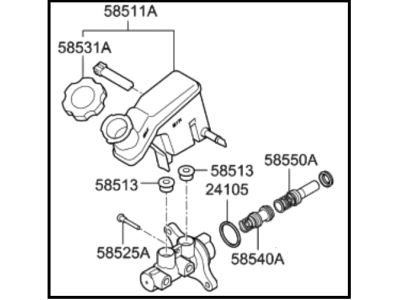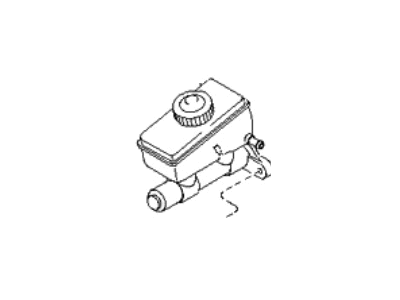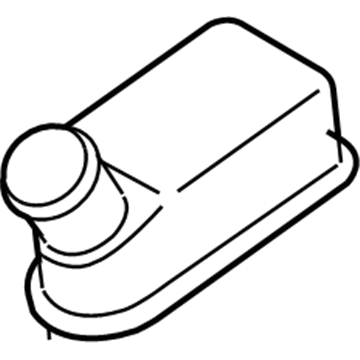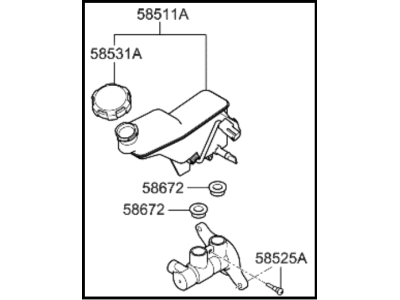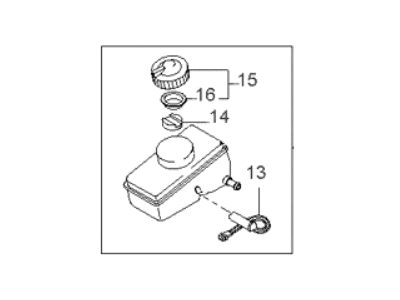×
- Hello
- Login or Register
- Quick Links
- Live Chat
- Track Order
- Parts Availability
- RMA
- Help Center
- Contact Us
- Shop for
- Kia Parts
- Kia Accessories

My Garage
My Account
Cart
Genuine Kia Sportage Brake Master Cylinder
- Select Vehicle by Model
- Select Vehicle by VIN
Select Vehicle by Model
orMake
Model
Year
Select Vehicle by VIN
For the most accurate results, select vehicle by your VIN (Vehicle Identification Number).
26 Brake Master Cylinders found

Kia Sportage Cylinder Assembly-Brake
Part Number: 58510D3100$263.27 MSRP: $378.92You Save: $115.65 (31%)Ships in 1-3 Business DaysKia Sportage Cylinder Assembly-Brake
Part Number: 58510D9150$263.27 MSRP: $378.92You Save: $115.65 (31%)Ships in 1-3 Business DaysKia Sportage Cylinder Assembly-Tandem Mast
Part Number: 0K01143400B$186.07 MSRP: $266.20You Save: $80.13 (31%)Ships in 1-3 Business DaysKia Sportage Cylinder Assembly-Brake
Part Number: 585101F510$221.12 MSRP: $316.34You Save: $95.22 (31%)Ships in 1-3 Business DaysKia Sportage Cylinder Assembly-Brake
Part Number: 585103W200$246.83 MSRP: $355.25You Save: $108.42 (31%)Ships in 1-3 Business DaysKia Sportage Cylinder Assembly-Brake
Part Number: 585102S201$279.32 MSRP: $392.85You Save: $113.53 (29%)Ships in 1-3 Business DaysKia Sportage Cylinder Assembly-Tandem Mast
Part Number: 0K01143400A$169.47 MSRP: $242.45You Save: $72.98 (31%)Ships in 1-3 Business DaysKia Sportage Cylinder Assembly-Tandem Mast
Part Number: 0K08A43400B$210.62 MSRP: $301.32You Save: $90.70 (31%)Ships in 1-3 Business DaysKia Sportage Reservoir-Master Cylinder
Part Number: 585292E600$46.60 MSRP: $66.10You Save: $19.50 (30%)Ships in 1-3 Business DaysKia Sportage Cylinder Assembly-Tandem Mast
Part Number: 0K01543400A$137.44 MSRP: $196.62You Save: $59.18 (31%)Ships in 1-3 Business DaysKia Sportage Cylinder Assembly-Tandem Mast
Part Number: 0K08A43400$173.86 MSRP: $248.74You Save: $74.88 (31%)Ships in 1-3 Business DaysKia Sportage Cylinder Assembly-Tandem Mast
Part Number: 0K08B43400$173.86 MSRP: $248.74You Save: $74.88 (31%)Ships in 1-3 Business DaysKia Sportage Cylinder Assembly-Tandem Mast
Part Number: 0K01543400B$181.95 MSRP: $260.30You Save: $78.35 (31%)Ships in 1-3 Business DaysKia Sportage Cylinder Assembly-Tandem Mast
Part Number: 0K08A43400A$216.95 MSRP: $301.32You Save: $84.37 (28%)Ships in 1-3 Business DaysKia Sportage Cylinder Assembly-Tandem Mast
Part Number: 0K08B43400A$225.55 MSRP: $313.27You Save: $87.72 (28%)Ships in 1-3 Business DaysKia Sportage Cylinder Assembly-Tandem Mast
Part Number: 0K08B43400B$218.97 MSRP: $313.27You Save: $94.30 (31%)Ships in 1-3 Business DaysKia Sportage CYLINDER ASSY-BRAKE
Part Number: 58510N9200$232.49 MSRP: $334.62You Save: $102.13 (31%)Ships in 1-3 Business DaysKia Sportage Tank Assembly-Reserve
Part Number: 0K08A43550A$52.14 MSRP: $71.24You Save: $19.10 (27%)Ships in 1-3 Business DaysKia Sportage Tank Assembly-Reserve
Part Number: 0K01143550A$52.74 MSRP: $72.05You Save: $19.31 (27%)Ships in 1-3 Business DaysKia Sportage Cylinder Assembly-Brake
Part Number: 585102E500$372.69 MSRP: $536.40You Save: $163.71 (31%)
| Page 1 of 2 |Next >
1-20 of 26 Results
Kia Sportage Brake Master Cylinder
If you're in search of top-notch, reasonably priced OEM Kia Sportage Brake Master Cylinder, then you've found the perfect spot. Our website boasts an extensive inventory of Kia Sportage Brake Master Cylinder, all priced at the market's premier price. Rest assured, every genuine part we offer comes with a warranty straight from the manufacturer.
Kia Sportage Brake Master Cylinder Parts Questions & Experts Answers
- Q: How to remove and install a master cylinder in a Kia Sportage?A:The Brake Master Cylinder is located in the engine compartment, mounted to the power brake booster. Using a large syringe or equivalent, siphon the brake fluid from the Brake Master Cylinder reservoir and dispose of it properly. Disconnect the electrical connector from the fluid level warning switch. Place rags under the fluid fittings and prepare caps or plastic bags to cover the ends of the lines once they are disconnected. Loosen the fittings at the ends of the Brake Lines where they enter the Brake Master Cylinder. Pull the brake lines slightly away from the Brake Master Cylinder and plug the ends to prevent contamination. Remove the nuts attaching the Brake Master Cylinder to the power booster. Pull the Brake Master Cylinder off the studs and out of the engine compartment. If a new Brake Master Cylinder is being installed and is not equipped with a reservoir, transfer the reservoir from the old Brake Master Cylinder to the new one using new seals. If a new Brake Master Cylinder is being installed, the booster pushrod-to-Brake Master Cylinder clearance must be checked and, if necessary, adjusted. Bench bleed the new Brake Master Cylinder before installing it. Mount the Brake Master Cylinder in a vise, with the jaws of the vise clamping on the mounting flange. Attach a pair of Brake Master Cylinder bleeder tubes to the outlet ports of the Brake Master Cylinder. Fill the reservoir with brake fluid of the recommended type. Slowly push the pistons into the Brake Master Cylinder - air will be expelled from the pressure chambers and into the reservoir. Repeat the procedure until no more air bubbles are present. Remove the bleed tubes, one at a time, and install plugs in the open ports to prevent fluid leakage and air from entering. Install the reservoir cap. Install the Brake Master Cylinder over the studs on the power brake booster and tighten the attaching nuts only finger tight at this time. Thread the brake line fittings into the Brake Master Cylinder. Fully tighten the mounting nuts, then the brake line fittings. Fill the Brake Master Cylinder reservoir with fluid, then bleed the Brake Master Cylinder and the brake system. The remainder of installation is the reverse of removal. Test the operation of the brake system carefully before placing the vehicle into normal service.
Related Kia Sportage Parts
Browse by Year
2024 Brake Master Cylinder 2023 Brake Master Cylinder 2022 Brake Master Cylinder 2021 Brake Master Cylinder 2020 Brake Master Cylinder 2019 Brake Master Cylinder 2018 Brake Master Cylinder 2017 Brake Master Cylinder 2016 Brake Master Cylinder 2015 Brake Master Cylinder 2014 Brake Master Cylinder 2013 Brake Master Cylinder 2012 Brake Master Cylinder 2011 Brake Master Cylinder 2010 Brake Master Cylinder 2009 Brake Master Cylinder 2008 Brake Master Cylinder 2007 Brake Master Cylinder 2006 Brake Master Cylinder 2005 Brake Master Cylinder 2002 Brake Master Cylinder 2001 Brake Master Cylinder 2000 Brake Master Cylinder 1999 Brake Master Cylinder 1998 Brake Master Cylinder 1997 Brake Master Cylinder

